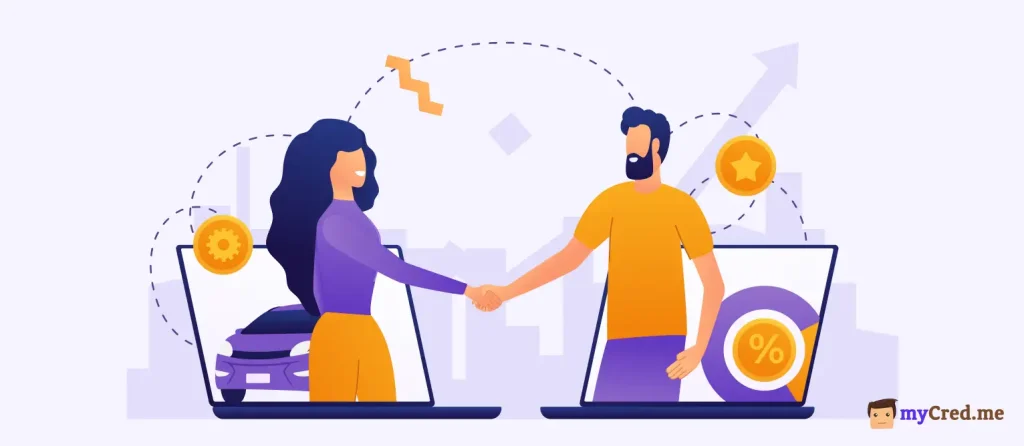
Recently, we have seen the automotive sector go through a significant transformation, haven’t we? Car manufacturers, dealerships, service centers, and even ride-hailing platforms are being pushed to adopt innovative and often disruptive strategies to maintain competitiveness and ensure long-term survival. One such strategy gaining traction is the implementation of automotive loyalty programs.
Although once considered an unlikely match for this industry, modern vehicle rewards systems are proving effective in driving essential KPIs for businesses.
What are Automotive Loyalty Programs
Automotive loyalty programs cover specialized customer retention strategies designed specifically for businesses within the auto industry. It goes from original equipment manufacturers (OEMs) to independent dealerships and rental agencies.
Whether it’s a manufacturer-driven initiative, a dealership-based rewards program, or a loyalty scheme for rental services, the main objective is to enhance the customer’s lifetime value.
However, different formats of these programs can also be customized to focus on various performance metrics, such as elevating personalization efforts, increasing brand visibility, and expanding social media engagement.
Examples of Automotive Loyalty Program Models
- Commitment-Based Loyalty Program: This model offers customers a discount on their vehicle purchase in exchange for long-term engagement. Participants agree to use the company’s network of services, download specific apps, and enable connected vehicle technology to share data insights.
- Membership-Based Loyalty Program: This program empowers brand attachment by granting members access to exclusive content and priority services. While there are no direct discounts, the goal is to make the brand a top-of-mind choice when customers are ready to buy or need service.
- B2B Loyalty Program for Partners: Rather than targeting consumers, this approach rewards partners, suppliers, and subcontractors with incentives to enhance productivity and deepen collaboration across the supply chain.
- Auxiliary Services Loyalty Program: Structured as a coalition program, this type spans various related services, such as rentals, car sharing, repairs, and bodywork. Customers can collect rewards from one provider and redeem them with another, creating an ecosystem of benefits across various automotive loyalty programs.
The Major Challenges of Customer Retention in the Automotive Sector
To create a well-rounded loyalty initiative in the automotive field, it’s essential to first understand the unique obstacles faced by businesses within the industry.
Automotive companies often contend with infrequent purchases, leading to three critical hurdles:
- Limited customer interactions
- Scarcity of actionable customer insights
- Difficulty in guiding consumer decisions
Due to the high cost and low frequency of vehicle purchases, dealerships and auto brands only have a brief window to engage with their customers. This short interaction period limits the ability to gather meaningful data on buyer preferences, vehicle usage, and driving behaviors.
Also, fewer interactions reduce opportunities to educate customers and build brand affinity.
However, advancements in technology are beginning to reshape the landscape. Innovations like connected vehicle tech now allow for ongoing communication through features such as smart parking services.
These enhancements not only enable continued customer engagement but also increase app usage, which enables companies to send targeted push notifications.
Whether using in-car connectivity or dedicated apps, incorporating a rewards system is key to strengthening retention by incentivizing behaviors that support your business goals.
Top Features of Automotive Loyalty Programs

A well-executed auto loyalty strategy consists of various interconnected components. To differentiate yourself, each element must work together smoothly. Below are some standout features for a robust loyalty platform in the automotive space.
Visually Compelling Member Hub
Many businesses underestimate the power of a well-designed, intuitive loyalty homepage. This space is typically the first stop for members and should present the program’s value clearly and attractively. It must include elements like the member’s unique ID, an easy-to-navigate layout, and a helpful FAQ section to clarify how the program works.
Advanced Loyalty Framework
Your program’s architecture defines how benefits are distributed. One approach is a points-based system, rewarding members according to their spending at your locations or within a partner network. These points can then be exchanged for savings or special offers.
Alternatively, a perks-based format grants all members access to certain advantages, either with or without a qualifying purchase. This setup is ideal for gathering contact data and maintaining consistent communication.
Collaborative Loyalty Networks
Multi-brand automotive loyalty programs bring together different businesses, such as manufacturers, service centers, and gas stations, under a single rewards umbrella. This setup lets customers collect points at one venue and redeem them at another, enhancing the overall experience while encouraging cross-brand engagement.
Subscription Membership Options
Although most loyalty programs are free, paid membership models can work when the perceived value is high. Customers may gladly pay a monthly fee if the program includes desirable features, like expedited roadside help, complimentary check-ups, or diagnostic alerts.
Exclusive Partner Incentives
What makes automotive loyalty programs particularly appealing is the variety of third-party benefits. Participants might enjoy freebies at fueling stations or substantial discounts at partner garages.
Focus on convenience by building a strong partner ecosystem that complements your core offer.
Interactive Data Collection

To tackle the personalization challenge, gather insights through interactive surveys covering topics like driving behavior, vehicle choices, or lifestyle preferences.
Offer rewards in exchange for completing these surveys, and use the responses to enhance user segmentation and communication strategies.
Incentives for Smart Car Integration
As connected car functionalities become mainstream, allow your loyalty members to try them out.
For example, offer a temporary upgrade, such as advanced driving features, in exchange for automotive loyalty points. This will educate users and promote deeper engagement with your tech offerings.
Mobile-Centric Engagement
An app designed for your loyalty program can significantly boost customer contact points. It can serve as the central platform for accessing promotions, managing services, viewing nearby partners, completing quizzes, or checking forecasts. You might also consider integrating with Mobile Wallets, allowing users to store their digital membership card alongside event passes and other essentials.
By integrating these strategic features, automotive brands can not only improve retention but also create meaningful, lasting connections with their customers.
Challenges in Launching Effective Automotive Loyalty Programs
Automotive loyalty programs are becoming vital tools for automotive brands seeking to retain customers and build lasting relationships. However, bringing these initiatives to life is far from straightforward.
Simply handing out rewards won’t guarantee success. Companies must address demanding customer expectations, intricate program logistics, and the long purchase cycles inherent to the auto industry.
A truly impactful loyalty initiative must combine relevant, appealing incentives with intuitive, tech-driven experiences that keep customers engaged beyond the showroom floor.
Addressing key obstacles is critical for creating a program that ignites real loyalty and repeat business.
Let’s break down some of the biggest hurdles and ways to tackle them.
Fierce Brand Rivalry in the Auto Market

Today’s automotive sector is saturated with competition. Manufacturers regularly introduce new models, expand product lines, and enhance features to meet evolving customer needs.
Today, most brands deliver on core values like reliability and safety; these once-critical differentiators no longer offer a competitive edge.
To gain traction, automotive businesses must innovate beyond the transaction. Offering unique benefits like customized benefits, VIP services, and digital conveniences helps brands remain top of mind.
Customers may easily be drawn to rival brands with more enticing offers without a compelling loyalty program.
The Complex and Infrequent Car Buying Process
Buying a vehicle is a significant investment, and one that doesn’t happen often. Consumers typically take their time evaluating financing options, features, and pricing before making a decision. This extended cycle makes it challenging for brands to maintain customer interest between purchases.
To keep the relationship active, automotive loyalty programs must provide
- ongoing value-added service discounts,
- reward points for maintenance visits, and
- access to early upgrade options.
These lucrative offers help sustain engagement and bring customers back even when they’re not in the market for a new vehicle.
Limited Access to Customer Data
Despite advancements in data technology, automotive companies often lack deep insights into their customers.
Gathering accurate and complete information can be difficult with dealerships, service centers, and rental partners acting as intermediaries. The data gap dents personalization and the ability to customize loyalty initiatives effectively.
To overcome this, companies should invest in robust CRM platforms, leverage AI tools, and integrate data from connected vehicle systems. A smart data strategy allows brands to deliver relevant rewards that resonate with individual preferences.
Shrinking Opportunities for Direct Engagement

This trend reduces physical touchpoints and limits opportunities for brands to build meaningful connections in person.
Maintaining a consistent digital presence becomes essential. Automotive loyalty programs should include
- timely service notifications,
- customized digital offers, and
- engaging content that keeps customers involved.
With a strong multi-channel approach, brands can extend the relationship well beyond the point of sale and turn one-time buyers into lifelong customers.
Effective Approaches for Automotive Loyalty Programs Success

Creating a thriving automotive loyalty program involves more than simply offering perks. It calls for a thoughtful strategy prioritizing personalization, digital convenience, and sustained customer engagement.
By adopting a set of proven techniques, automotive businesses can empower customer retention, inspire repeat visits, and amplify brand loyalty.
Here’s a look at some essential strategies for winning automotive loyalty programs:
Customized Rewards That Resonate
Personalized incentives consistently outperform one-size-fits-all deals. Using customer data through CRM platforms, AI, and analytics allows automotive brands to design rewards tailored to individual behaviors, such as service frequency, purchase trends, and driving habits.
As an example, customers who regularly service their vehicles might enjoy discounted oil changes or priority scheduling. Meanwhile, long-term buyers could receive special trade-in deals or loyalty-based lease enhancements.
When offers are data-driven, they feel more relevant, boosting satisfaction and encouraging repeat engagement.
Collaborations That Add Value
Forming alliances with like-minded businesses can enrich a loyalty program and expand its appeal. By teaming up with companies in adjacent industries, automotive brands can broaden their reward offerings and deliver extra convenience to members.
Consider a dealership loyalty program that includes perks like fuel discounts, complimentary car washes, or deals on auto insurance and parts. Leading brands such as My BMW Rewards have successfully partnered with dining, travel, and retail providers to deliver more diverse benefits.
These collaborations keep programs exciting, expand their value, and help maintain ongoing customer interest.
Gamified Experiences to Drive Engagement
Gamification brings a dynamic, interactive layer to loyalty programs. By integrating game-like features such as challenges, point tracking, and special achievements, brands can create a more engaging user experience.
For instance, a branded app could award points for eco-friendly driving, timely maintenance visits, or test drives. Programs like Hyundai’s Blue Link Rewards and Tesla’s Referral Program tap into this strategy to reward customer actions, such as referrals or service milestones.
With elements like leaderboards, achievement badges, and tiered reward levels, gamification boosts participation and keeps users connected beyond their initial purchase.
Expanding Reach Through Referrals
Happy customers make excellent ambassadors. Referral programs turn automotive loyalty programs into a growth engine by offering incentives for bringing in new clients.
A dealership might reward a successful referral with service credits, accessories, or exclusive discounts. Tesla has set a benchmark with its referral initiative, granting benefits like free Supercharging, product upgrades, or savings on new vehicle purchases.
These automotive loyalty programs expand visibility, accelerate conversions, and reinforce customer allegiance by giving both the referrer and the referred person a reason to engage.
Real World Best Examples of Automotive Loyalty Programs
Observing how leading car manufacturers execute their loyalty initiatives can provide key takeaways on building strong customer connections.
Here, we’ll detail out standout examples of the world’s leading automotive loyalty programs. See how these brands leverage customized incentives, strategic alliances, and interactive features to encourage lasting brand commitment.
Subaru Automotive Loyalty Program

Subaru of America provides a unique suite of customer advantages, favoring exclusive owner experiences over a traditional point-based rewards system. Rather than accumulating points, Subaru owners enjoy a curated set of privileges aimed at enhancing their relationship with the brand.
What Do Subaru Owners Receive?
Verified Subaru owners gain access to an evolving catalog of perks, which may include:
- Savings on insurance, travel services, and digital subscriptions
- A complimentary subscription to Subaru Drive Magazine, featuring insider stories and updates
- Invitations to Subaru-exclusive events and festivals
- Special pricing on parts, accessories, and routine maintenance
Each benefit is redeemed separately, often through Subaru’s partner platforms or direct applications. Because the offerings are updated throughout the year, owners are encouraged to check Subaru’s official website periodically for the latest options.
With an emphasis on lifestyle-driven rewards and community engagement, Subaru builds loyalty by making ownership a more immersive and enjoyable experience.
FordPass Rewards

FordPass Rewards is a points-based automotive loyalty program integrated into the FordPass mobile app. Designed for convenience and flexibility, it offers incentives that cater to both new and returning customers.
How It Works
After enrolling through the app, members earn points by purchasing or leasing new vehicles, with the amount varying by model:
- 42,000 points for gas-powered vehicle purchases or leases
- 75,000 points for diesel-powered models
- 22,000 points plus 250 kWh of free charging for Mustang Mach-E customers
Points can be used toward future vehicle services, accessories, or even maintenance visits. Through a collaboration with Visa, FordPass Rewards also provides access to Special Financing on purchases over $499 at participating dealerships, including service costs and warranty extensions.
By combining digital access, tailored financial benefits, and versatile rewards, FordPass Rewards deepens customer relationships and promotes brand affinity.
Volkswagen – One of the Royal Automotive Loyalty Programs

Volkswagen extends a selection of loyalty-focused offerings that benefit both existing and returning customers. While there is no centralized loyalty platform, VW’s approach includes financial perks, service discounts, and card-based rewards.
Loyalty Features Include:
- Customer Loyalty Offers: Special lease deals, financing rates, or trade-in bonuses for returning buyers
- Volkswagen Credit Card: Earn points on everyday purchases that can be redeemed toward maintenance, accessories, or vehicle payments
- Prepaid Maintenance Packages: Discounted routine services through Volkswagen Care plans
- Owner-Exclusive Promotions: Event invitations, limited-time service deals, and seasonal specials from participating dealerships
Volkswagen frequently rewards brand loyalty with discounted upgrade options for returning customers, reinforcing long-term engagement and satisfaction.
BMW Loyalty Benefits

BMW provides a layered loyalty experience through various programs and incentives tailored to customers who lease or purchase their vehicles. Although there is no single loyalty system, BMW’s range of offers enhances the ownership journey.
BMW’s Loyalty Program Highlights:
- BMW Loyalty Credit: Returning customers are eligible for reduced financing rates, exclusive lease terms, or cashback when upgrading to a new model
- BMW Credit Card Rewards: Earn points on all purchases, which can be applied toward service, parts, or BMW lease/loan payments
- Owner Privileges: Access to priority service scheduling, special accessory discounts, and invitations to exclusive BMW-hosted events
Loyalty Lease and Purchase Credits vary depending on the vehicle and offer structure, giving returning customers added value when staying within the BMW family.
By blending financial rewards, unique owner experiences, and personalized incentives, BMW creates a loyalty ecosystem that ignites deeper connections with its drivers.
Final Thoughts
Implementing automotive loyalty programs in the automotive sector presents certain hurdles. However, brands that recognize these challenges and adopt effective strategies can establish lasting customer connections and achieve long-term growth. By offering customized rewards, game-based engagement methods, and referral incentives, automotive companies can improve customer retention, enhance brand allegiance, and encourage continued patronage. The success stories of industry leaders like Ford, BMW, and Volkswagen can serve as a powerful means to maintain customer trust and outperform competitors.
FAQs About Automotive Loyalty Programs
What is an automotive loyalty program?
An automotive loyalty program is a customer retention strategy used by car manufacturers, dealerships, or service providers to reward customer engagement, repeat purchases, or services through points, discounts, or exclusive perks.
How do dealership loyalty programs work?
Dealership loyalty programs typically reward customers with points or discounts for routine maintenance, service visits, or vehicle purchases. These points can be redeemed for future services, accessories, or even price reductions on new vehicles.
Are automotive loyalty programs worth it?
Yes, especially if you frequently visit the same dealership or brand for services. These programs can offer substantial savings on services, early upgrade options, exclusive events, and personalized offers.
What are the best features of a successful automotive loyalty program?
Key features include a mobile-friendly member hub, personalized rewards, smart car integrations, partner benefits (like fuel or insurance discounts), and gamification elements such as points, tiers, and achievements.
How often do I need to use the loyalty program to keep my points?
This depends on the specific program. Some points expire after a year of inactivity, while others may reset annually. Always check the terms and conditions for expiry policies.
What’s the difference between points-based and perks-based loyalty programs?
Points-based programs let customers accumulate points to redeem later, while perks-based programs offer immediate benefits like priority service or exclusive access, regardless of purchases.




